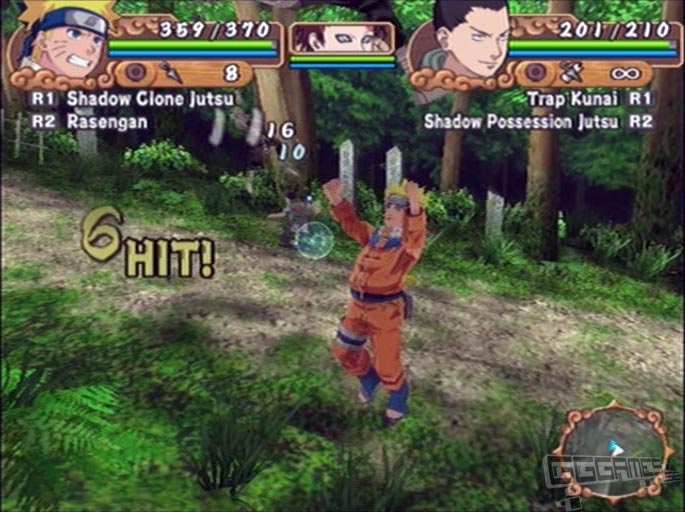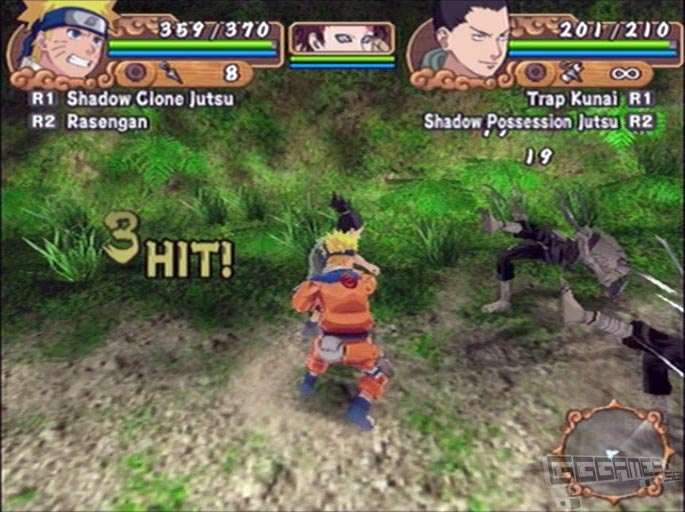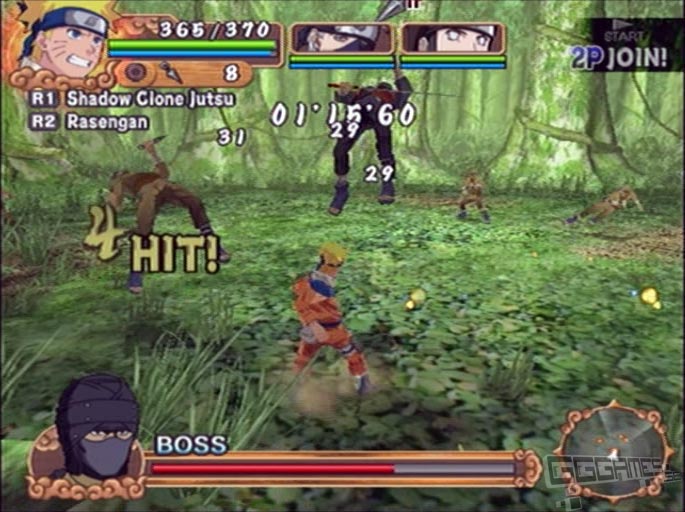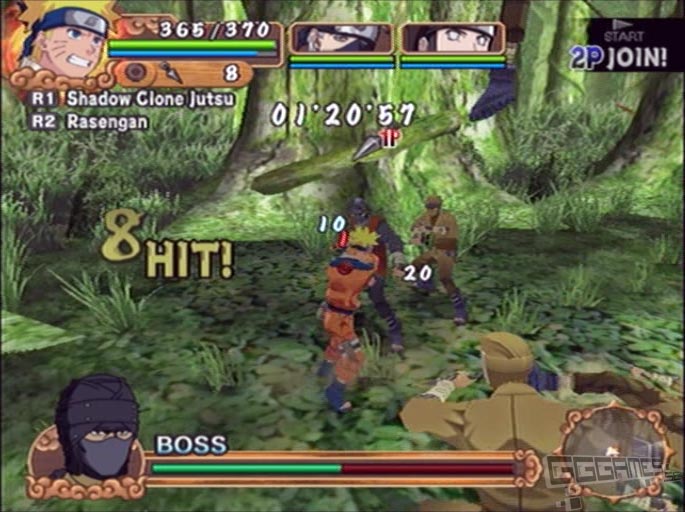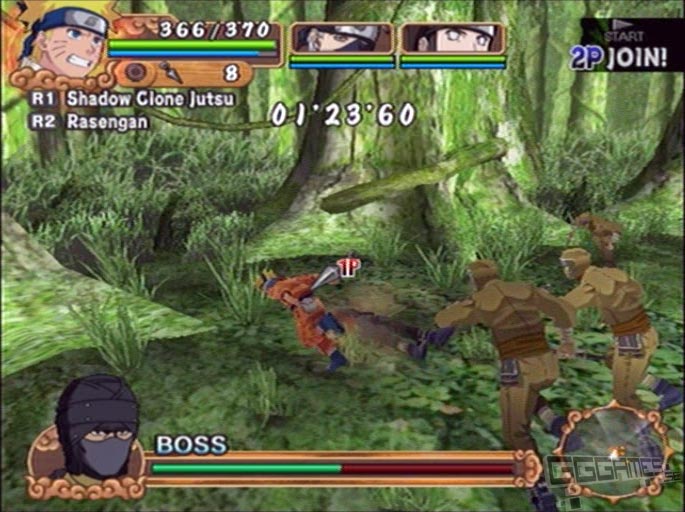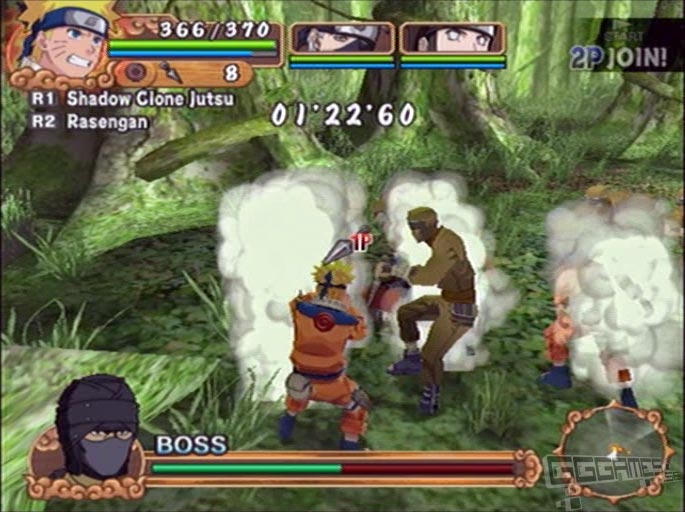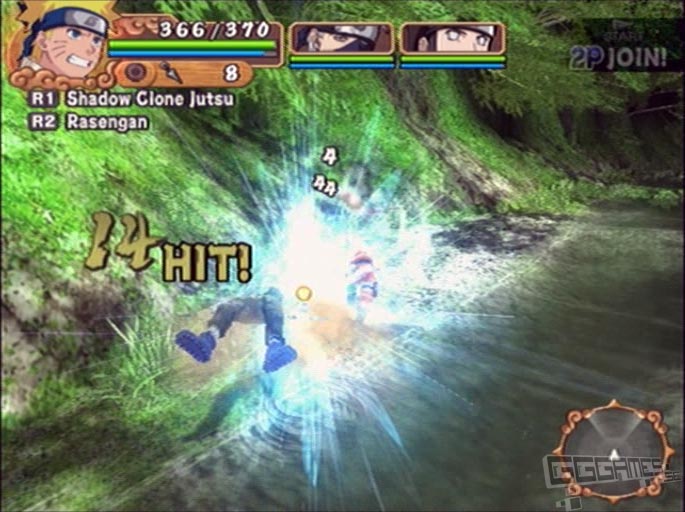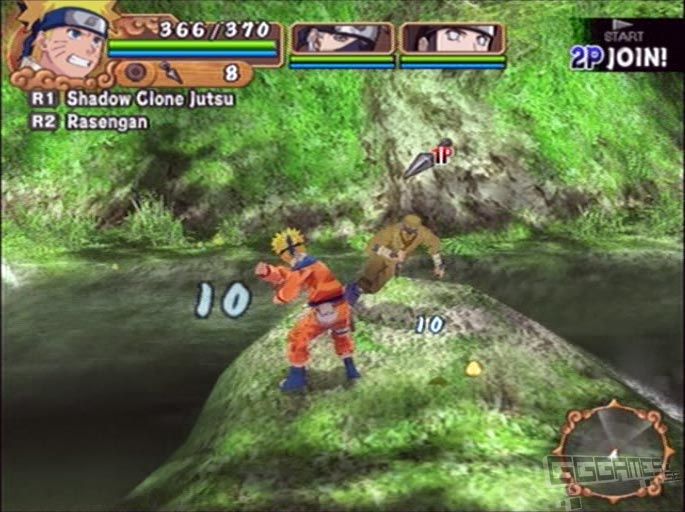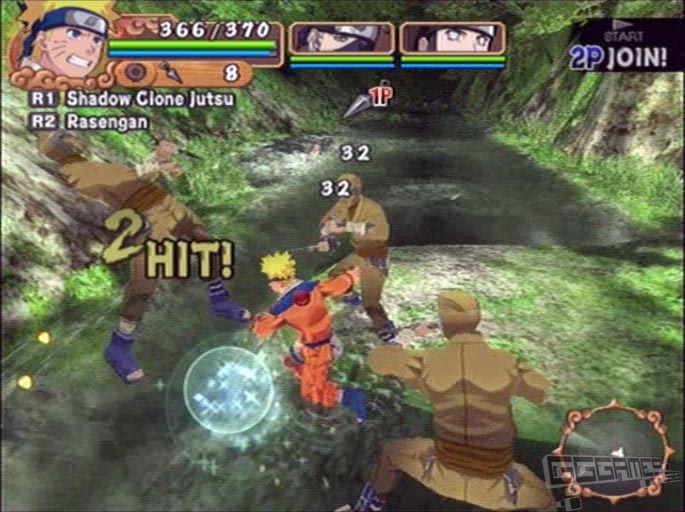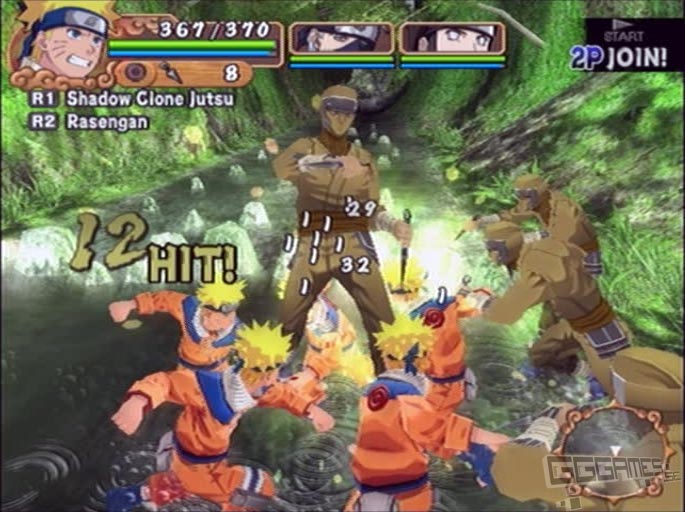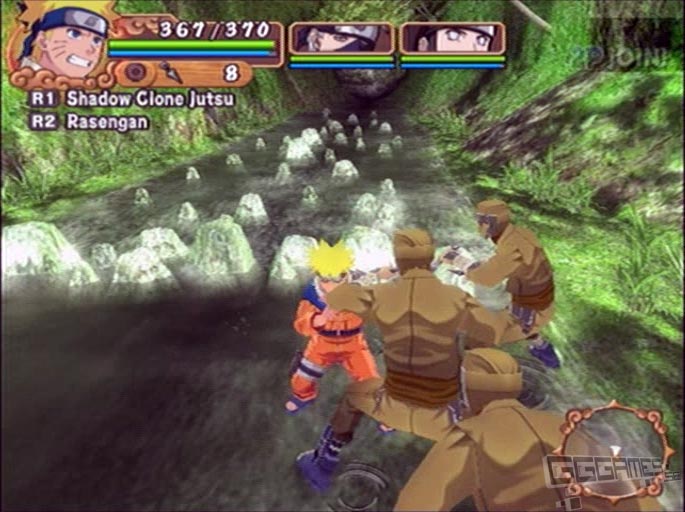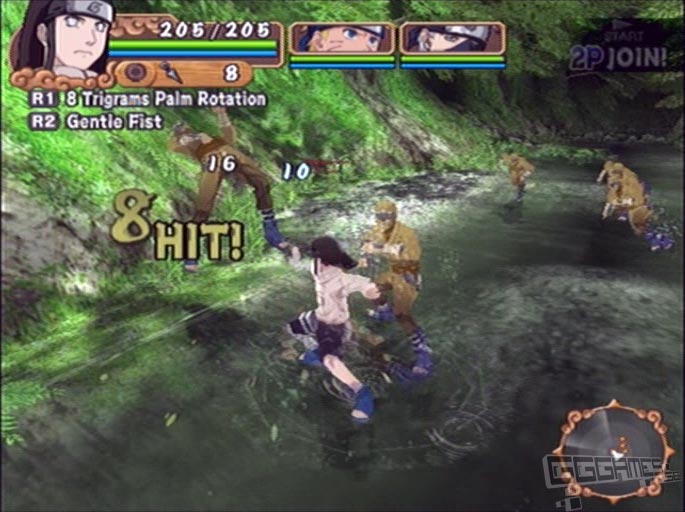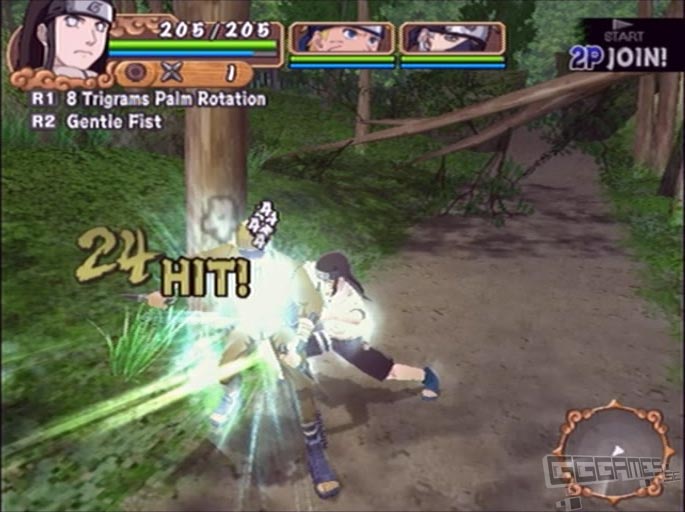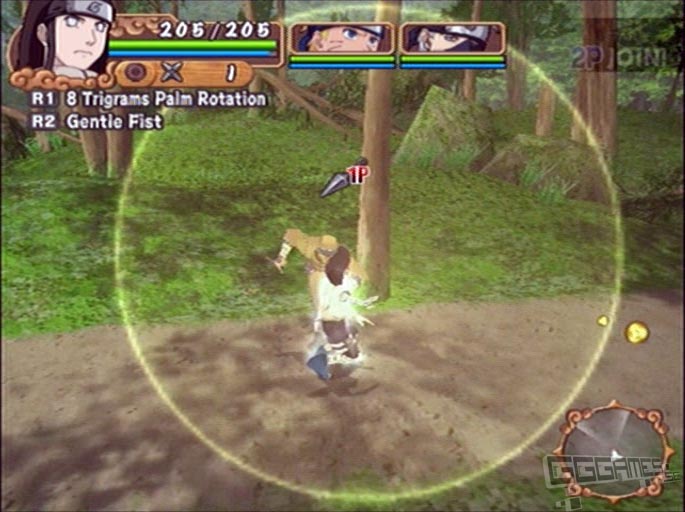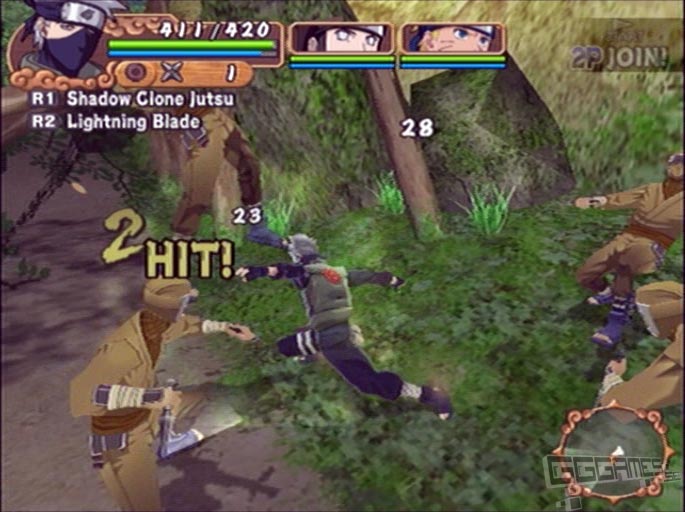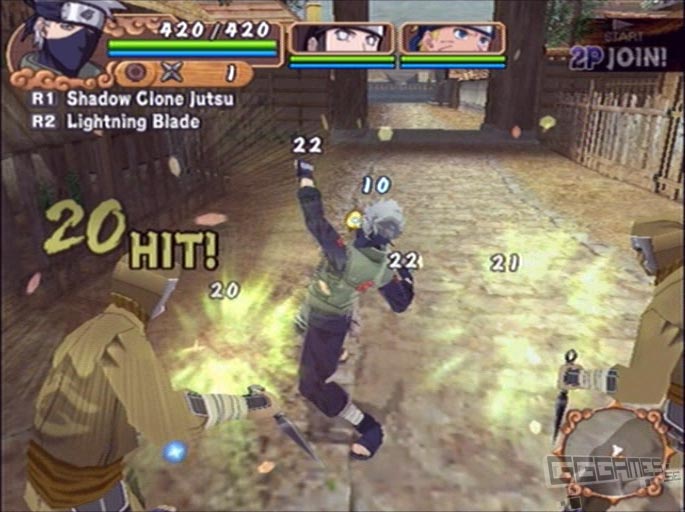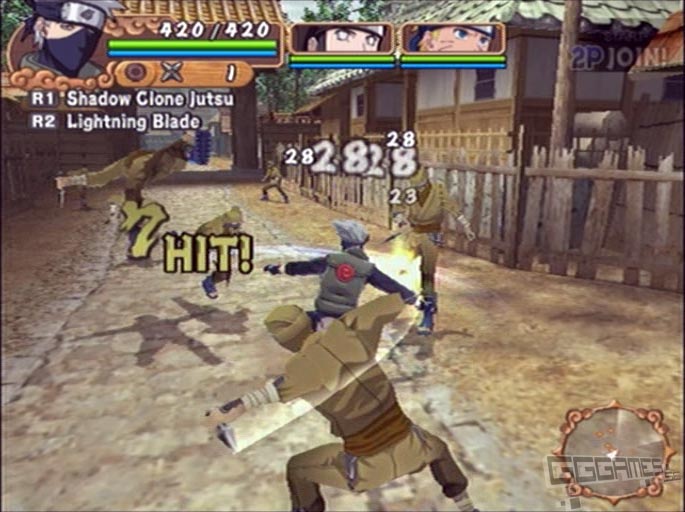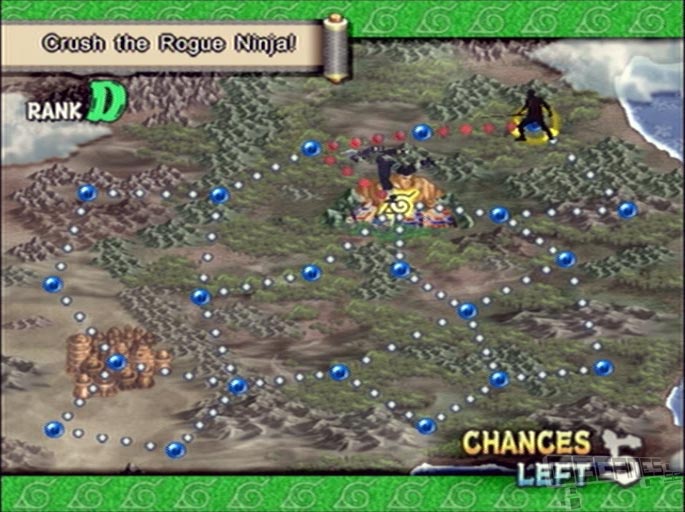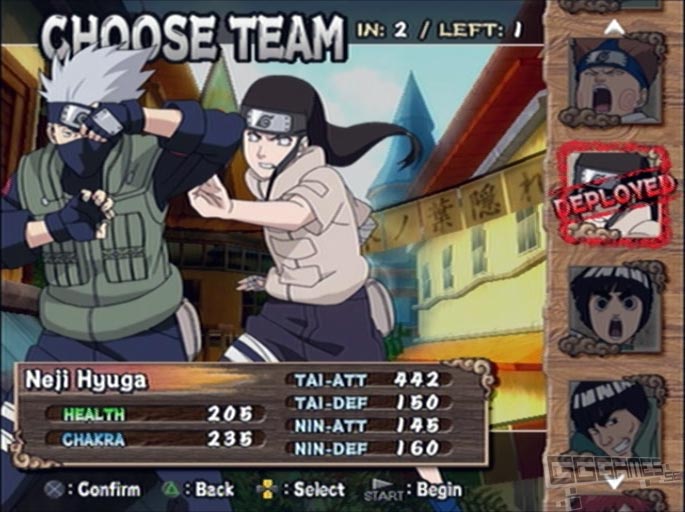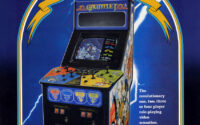Naruto Uzumaki Chronicles 2 Review
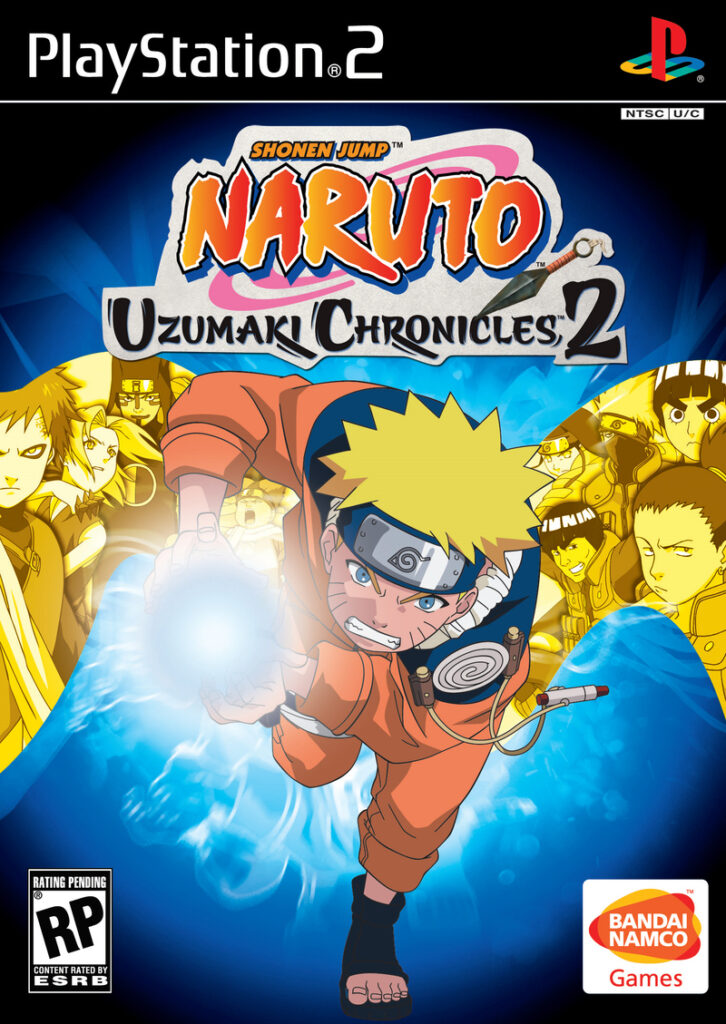
Ninja action adventure fighting game with tons of content and hours of entertainment.
Story
A mysterious puppet master and its puppet walkers have captured four of the five spirit orbs in the land. Now they are searching for the fifth one, killing and destroying everything in their way. If they are to find all the orbs, they will be able to perform a powerful ritual, eventually making the puppet master an invincible and tyrannical lord of the land. The ninja of Leaf Village must do what they can to stop this evil plot – so the war against the puppet master and his minions begins…
The Game
Naruto Uzumaki Chronicles 2 is a sequel to Naruto Uzumaki Chronicles which was released in Europe for PlayStation 2 back in 2007. In Naruto Uzumaki Chronicles 2 you play as various well-known Naruto-characters in an epic story about the puppet master and his evil plot. More often than not, you can select which character to play (even on the fly!) from a few different choices.
As this is a Beat ’em Up type game where you travel on a world map fighting your way through numerous puppets and evil ninjas. The adventure is filled with action and the fighting is easy to grasp and enjoy. Even though the game is story driven the story telling is mostly happening between missions as mission briefings – allowing for lots of fighting to happen in between.
Content
There are 13 playable characters in all, but when playing the Story Mode you are only given access to specific characters when the story calls for it. Some of them have to be unlocked by doing various accomplishments, and once you unlock a character you can use it all the other game modes.
The following characters are playable in the game and they all have their iconic special abilities;
- Uzumaki Naruto
- Haruno Sakura
- Hatake Kakashi
- Nara Shikamaru
- Akimichi Chouji
- Hyuuga Neji
- Rock Lee
- Might Guy
- Gaara
- Kankurou
- Uchiha Sasuke
- Uchiha Itachi
- Hoshikagi Kisame
There’s a lot of content to cover if you want to explore everything that the game has to offer. The Story Mode is where the bulk of the action will take place. It contains of 39 missions across ten chapters, sporting a play time of about twelve hours the first time through. It supports jump-in co-op, so at anytime a second player can jump right into the action and help you out. Once you complete the story, you can continue playing the story again to build up your characters further and see how far you can take them.
Character development is a very important aspect in the game. Each character has its own stats, and you can improve each character by collecting experience orbs dropped by enemies when defeated. You must also allocate those experience points into various stats reflecting ninjutsu (ninja powers), taijutsu (hand to hand combat), health points and so on. Depending on how you choose to allocate those points, your character will shape up to reflect those choices. It isn’t a make or break scenario though – you’re pretty much free to experiment with the character development and you’ll still be able to beat the game.
Other than experience orbs your character can benefit from bonuses gained from a so-called skill plate. The skill plate is personal and unique to each character. You can buy items called chips from the shop and insert those chips into the skill plate. This will give that character a permanent bonus of some sort as long as he has that chip in his plate. Chips can also give you new attacks and greatly improve your powers. There are over 100 such chips in all, and some are only usable by specific characters. The skill plate has a limited size, but it can be increased by upgrading it.
Once you embark on an assigned mission you’re taken to the world map where you’ll see an overview of the vicinity. You’ll see the paths that connect the different locations together and when traveling those paths you’ll bump into random enemy encounters. You’re then taken to an arena type stage where you must defeat the enemies. There aren’t many different types of encounters that can occur, so you’ll recognize the same few enemy groups after a while. The arenas are also reused over and over, so there isn’t much variety here.
Performing ninjutsu attacks will drain your chakra power bar – because of this you’ll have to be wise about how you use your attacks. It’s often effective to lure multiple enemies into a group and unleash your most powerful attack at the group. Regaining chakra is done by collecting chakra orbs that are dropped from defeated enemies – there’s usually enough chakra to go around.
The game also features various weapons that you can pick up and use against the enemy – there are bombs, shurikens and other thrown weapons to mix the fighting up a bit.
You’ll notice that the game displays so-called damage numbers when you hit a foe or get hit yourself. This number will pop up for each hit and shows you how much damage that hit caused. Thanks to this feature it’s easy to see when your characters grow in power and, with some number crunching, which combos are the most effective ones.
Once you reach a key mission location, there’s typically a more lengthy stage that you must navigate through, and they are very varied indeed – caves, fortresses, villages, roof tops and underground ninja hideouts are some of the stages you’ll fight through. These areas are pretty open and designed to allow you to explore the area as you see fit.
There’s also some platforming elements here and there which mostly are an annoyance because of the somewhat unruly camera view – this is especially true when the camera is following two players playing co-op. Sometimes you’d just better let the second player exit the game while you do the tricky jumps. Otherwise the camera tends to rotate around your character when you least expect it, and the game requires you to compensate for it by changing the direction you press on the thumb-stick. This means that your character will end up running in the wrong direction which typically isn’t a good idea when you’re supposed to jump from one roof to another.
Here and there you’ll encounter some puzzle elements as well, and there are some mission objectives in the mix that stand out as unique. All in all, the game does deliver variety and fast paced action at the same time.
The stages often allows you to backtrack to a previous part of the stage if you would want – but this also means that if you aren’t careful you may accidentally exit a stage. Obviously this is mostly notable when playing co-op and it is a minor issue but it forces you to sit through two extra loading screens that could have been avoided by simply asking the player to confirm if they intend to leave the stage.
You’ve also got a radar at the bottom of the screen. This radar shows you the position of enemies, but it isn’t quite as useful as you might think. You can’t really use it for anything.
Other than this, the Story Mode is very enjoyable given the fact that it has some very cool stages, plot twists, level design is generally good, boss battles are intense and the stages do have numerous secrets for you to find and explore.
Other game modes included in this game are the Survival and 2p Battle modes. Survival mode takes you to an area in which you have to battle on coming enemies and survive. There are twelve survival missions and they vary in difficulty.
The 2p Battle is essentially a versus mode where you can play the game as if it was a standard fighting game against another player. Note that fighting an AI controlled opponent is strangely not supported. The game isn’t really optimized to play this way as the controls, camera and character balance are they way they are. It all amounts to some really shaky and chaotic battles. It’s fun for a while and it does have some replayability thanks to the varied cast of characters, but it’s not to be taken too seriously.
Further game modes are Mission Mode and Udedamashi Mode. The Mission Mode features 46 different stand alone missions – or battles rather – where you must meet a certain criteria in order to win. Most of these missions will allow you to have three characters in your team, and just as in Story Mode you can switch in and out characters as you see fit. These missions can be really tricky and to beat them all would really require you to master the fighting aspect of the game.
The Udedamashi mode is a time trial game mode where you battle to defeat enemies within a time limit.
Controls
The controls are very player friendly overall. You can easily execute and launch the various character specific ninja techniques, and the basic hand to hand fighting combos are also easy to perform. With that said, the mechanics for fighting is pretty well done, but it will tend to feel a little flat after a while.
The jumping and platforming however is a different story – it’s hard to predict where your jump will land, partly because of the camera and partly because of how your character interacts with the surroundings – wall jumping is a prime example of when your character has its own will.
Graphics
The graphics in Naruto Uzumaki Chronicles 2 are very vivid, colorful and smooth. The cutscenes may not exactly make the cut because the facial animation is very limited. But other than that, this game looks amazing for a PlayStation 2 game. The fighting stages and arenas look very lush and are quite detailed. The fighting moves are pretty solid and the special attacks are awesome and the animation is good. The camera utilizes interesting view angles to depict the action in a very lively way.
Overall the game looks great, despite the fact that there are some parts of some stages that look a little plain. But more importantly the game runs really smooth and is very easy on the eyes.
Sound
The music in the game sounds like typical Naruto style music – it isn’t however the music heard in the animated series. But it has that same cheery cute rock-ish ninja-sound, and it also has atmospheric and epic parts in it as well. It’s very well done and it uses traditional Japanese instruments to create that unique and charming Naruto sound.
The PAL version of the game allows you to play with either the original Japanese or the dubbed American voices. Needless to say, the Japanese voices are better and it’s really well made – sure enough, there’s always a risk that you’ll grow tired of the same samples if you keep repeating the same special attacks, but that’s a minor issue.
Summary
Naruto Uzumaki Chronicles 2 is a great game! It has quite some depth thanks to its many secrets, variety and detailed level-up system. The story allows for both exploration, brawling and puzzle solving. With a friend this game is a unique co-op brawling experience, which sadly are very rare these days.
If you’re a fan of Naruto and fancy a co-op game, this is a very viable choice. It’s pretty lengthy and should satisfy just about anyone who enjoys cartoonish ninja fighting.
